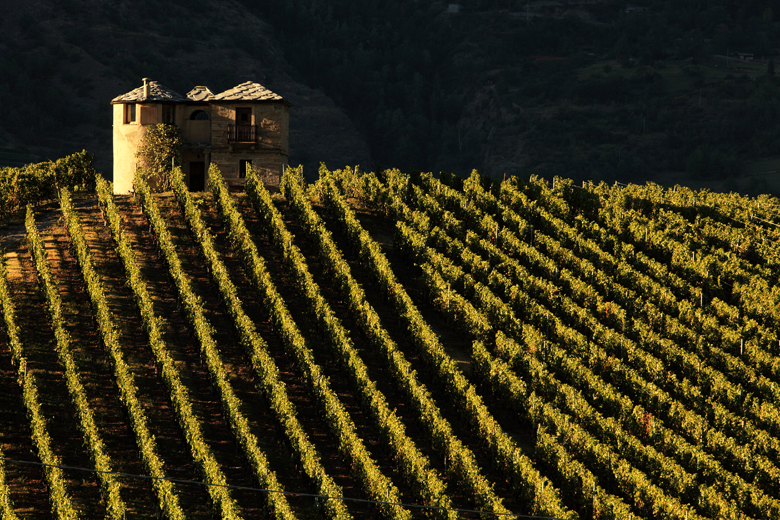Few regions in the world evoke emotions in people like the Alps do. Images of snow-peaked mountains, lush valleys and meadows of wildflowers dance in our heads. We know the Alps were crossed by Hannibal on his way to pillage Rome and by Napoleon in his attack on Austria. And many of us grew up with the bucolic images of The Sound of Music and cheezy Ricola commercials.
The Alps are the highest and most extensive mountain range in Europe, running from the South of France to Slovenia and cutting a path through six other European nations: Austria, Germany, Italy, Switzerland, Monaco and Liechtenstein. They contain the highest peak in Europe (the towering Mont Blanc which, at 16000 ft, is approximately 4.88 km high!) as well as 128 peaks that top 13000 ft (about half the height of Mount Everest). The waters coming from these ranges feed legendary rivers like the Danube, the Rhine and the Rhône and well-known lakes such as Lake Geneva and Lake Garda. Most of the settlements in and around the mountains are small rural hamlets or towns that have traditionally been less well-off than their lower-lying neighbours.

Only four European countries have serious viticulture taking place in the Alps: Italy, Switzerland, France and Austria. Most of the grape-growing takes place on the leeward side, in the rain shadow of the mountains. These tend to be arid, dry areas, with higher-than-average days of sunshine and minimal rainfall during the growing season, while the windward side of the peaks are wetter, windier and less suitable for fine winemaking. The leeward side of the mountains are also subject to “Foehn Winds” — strong, dry, warm winds that can drive temperatures up 15℃ in a matter of hours when they are blowing — caused by warm air masses and winds from the Mediterranean that dump their moisture on the windward side of the range. These winds are responsible for the relatively warm climates of Austria, Germany and Switzerland, despite their Continental location and northerly latitudes. They make it possible to fully ripen grapes at unlikely elevations and, along with dry temperatures, help enable sustainable as well as organic viticulture.
Until the 1990s, most of the cool-climate wines produced in the Alps were extremely rustic, high acid, simple wines consumed primarily by locals and ski town tourists. They frequently had high amounts of residual sugar and low alcohol levels, to temper the low pH and high acid levels. More recently, climate change has enabled producers in many of these areas to fully ripen grapes and gain much more complexity in their finished product and Alpine wines have taken on a much loftier profile in the market. High acid levels and terroir-driven minerality ensure they are always elegantly styled.

The mountains are home to a vast array of soil types, minerals, quartz and rock formations, many of which are found only in this region. Blessed with mineral-laced soils and large diurnal shifts, grape-growers frequently plant grapes on steep cliffs, heroically working their high-altitude, treacherous vineyards by hand. The grapes are planted to focus the sun’s rays at the most fortuitous times of day to ensure proper sun exposure. There are a large number of indigenous grape varieties here, many found only in these tiny appellations, rarely planted elsewhere in the world: Petite Arvine, Chasselas, Jacquère, Altesse and Humagne for whites; Fumin, Mondeuse, Schiava and Lagrein for reds.
Two of the Alpine regions we are most fond of at Buyers + Cellars are the Aosta Valley (Val d’Aosta or Valle d’Aosta) in Northern Italy and the Savoie in France. In Aosta, rocky vineyards are planted on the steep slopes of Mont Blanc or are surrounded by some of the highest peaks in the Alps, like Monte Rosa and the Matterhorn. This is the smallest DOC in Italy and over 90% of production is consumed locally. The wines carry a haunting saline-driven quality from their intense minerality but can be powerful and full-bodied thanks to over 300 days of sun each year. This region is French speaking and fiercely independent and, along with indigenous grapes, they have old vine plantings of French varietals such as Chardonnay, Pinot Noir and Pinot Grigio.
Savoie, in South East France, has its own autochthonous grapes and a long history of winemaking. Also known for skiing and hiking, the region consists of scattered sub-regions throughout the mountain ranges. Nearby lakes and rivers moderate temperatures and vines benefit from southern exposures on the leeward sides of the rain shadow. Wines from Savoie have that tell-tale Alpine saltiness but tend to be lighter and flintier than wines from neighbouring Aosta, on the other side of Mont Blanc.


